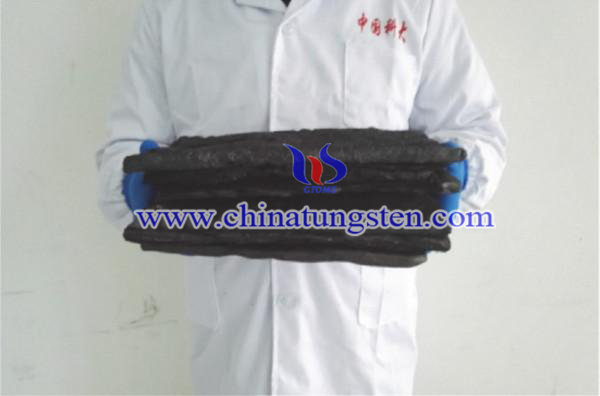Preparation of Tungsten Trioxide Solid Acids Using Ammonium Paratungstate as Tungsten Source
- Details
- Category: Tungsten Information
- Published on Tuesday, 06 April 2021 16:42
Solid acid catalysts (SACs) have a widely and valuable industrial applications such as petroleum, biodiesel, and chemical industries. SACS are considered as the most important categories of catalysts that serve the petroleum industry. Thus, SACs promote environmentally benign heterogeneous catalysts that assist wide industrial applications.
A great number of SACs are based on various metal oxides-, carbon-based or hybrid compositions. Among them, the metal oxides have excellent remarks for a broad spectrum of reactions. Although the other types serve a stability of both acid and metal sites.Thus, tungsten trioxide solid acids (WO3-SO42--SnO2) were prepared via sol-gel method using two different percentage loadings of WO3 (15 wt% and 35 wt%). Ammonium paratungstate had been used tungsten source.

The synthesis process of WO3-SO42--SnO2 solid acids are as below:
Pure tin oxide hydrogel was prepared by dropwise addition of ammonia solution (10 wt%) to 0.5 M solution of SnCl4·5H2O (Riedel-deHaen) to reach a final pH of 8 with continuous stirring for 4 h. The gel was left overnight and then washed by decantation in sequence with a solution of 1% ammonium acetate until a free Cl− solution was obtained. The solution was then washed by bidistilled water washing and dried to a constant weight at 120 °C to obtain the pure tin oxide dried hydrogel. To impregnate sulfate ions on tin (IV) oxide hydrogel, an appropriate amount of 1 M H2SO4 solution was added to the tin oxide hydrogel (prior to drying) with vigorous stirring for 4 h to obtain a product with final sulfate percentage of 15 wt%. The obtained gel was aged for 24 h at room temperature and 50 °C, then filtered and dried to constant weight at 120 °C. The resulting product is denoted hereafter as ISS sample.
Appropriate amounts of ammonium paratungstate (APT) solution were added to a known amount of ISS catalyst, with stirring for 4 h, to make the percentage loading up to 15 and 35 wt% WO3 respectively and dried again to constant weight at 120 °C. The obtained materials were calcined in air at 400 and 650 °C respectively, for 4 h.

In conclusion, tungsten trioxide solid acids (WO3-SO42--SnO2) were prepared with sol-gel method using two different percentage loadings of WO3 (15 wt% and 35 wt%). Ammonium paratungstate had been used tungsten source the DTA tracing indicates that the presence of sulfate and loading with WO3 would hinder the crystallization of SnO2. The TG loss decreased gradually with an increase of WO3 loading. The catalysts calcined at 400 °C have poor crystalline structures whereas the 650 °C products show has crystalline tetragonal cassiterite structure and the catalyst loaded with 35 wt% WO3 also shows the characteristic peaks of tungsten oxide. The potentiometric titration with n-butylamine also indicated very strong acid sites for catalysts calcined at 400 °C but dependent on the aging method, and percentage loading of WO3. Generally, both the surface area and micro-pore volume decreased gradually with rising calcination temperature, whereas the total pore volume and a mean pore radius increased with rising calcination temperature.
- APT Manufacturer & Supplier, Chinatungsten Online: ammonium-paratungstate.com
- Tungsten News & Prices of China Tungsten Industry Association: www.ctia.com.cn
- Molybdenum News & Price: news.molybdenum.com.cn
- Tel.: 86 592 5129696; Fax: 86 592 5129797; Email: sales@chinatungsten.com



 sales@chinatungsten.com
sales@chinatungsten.com